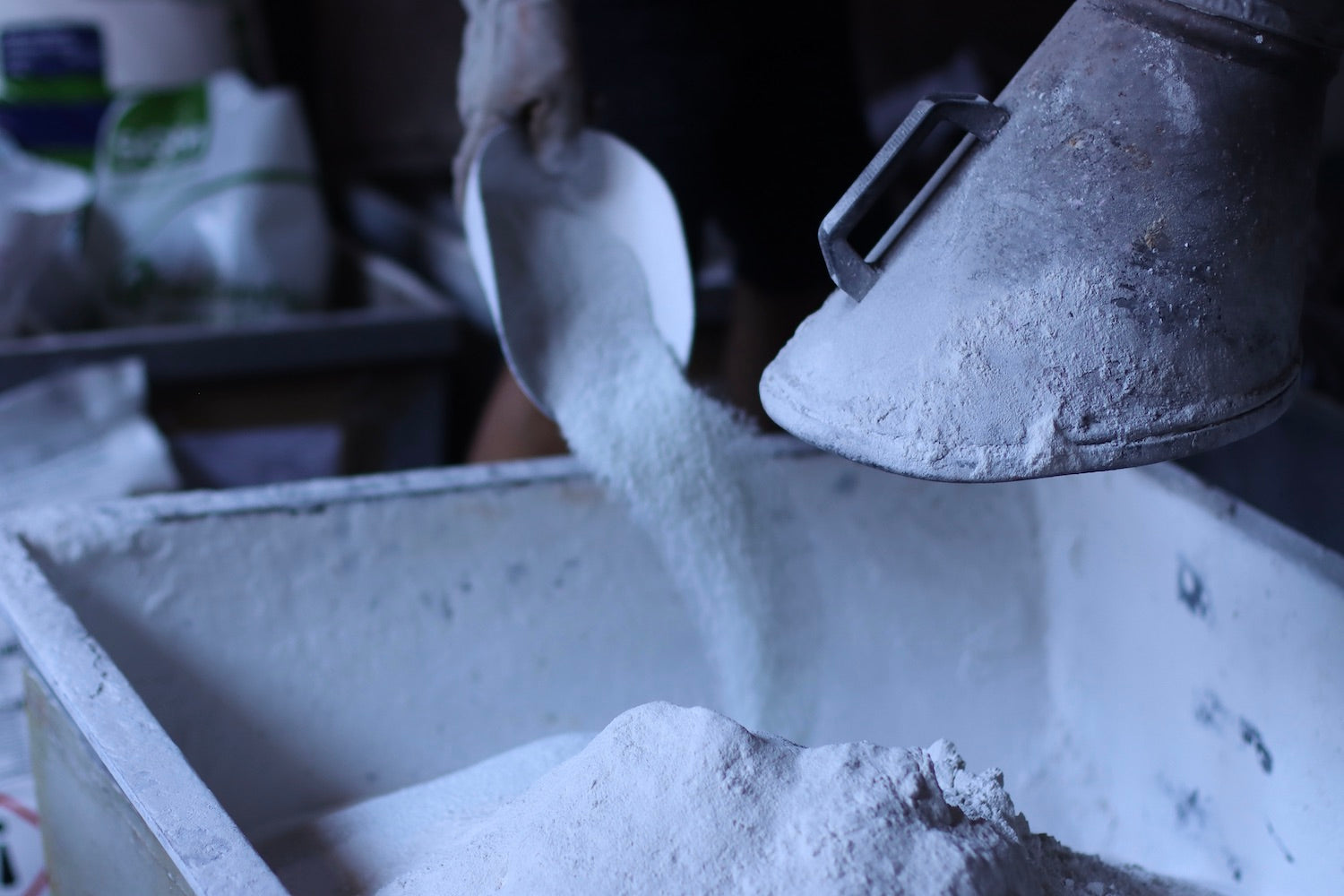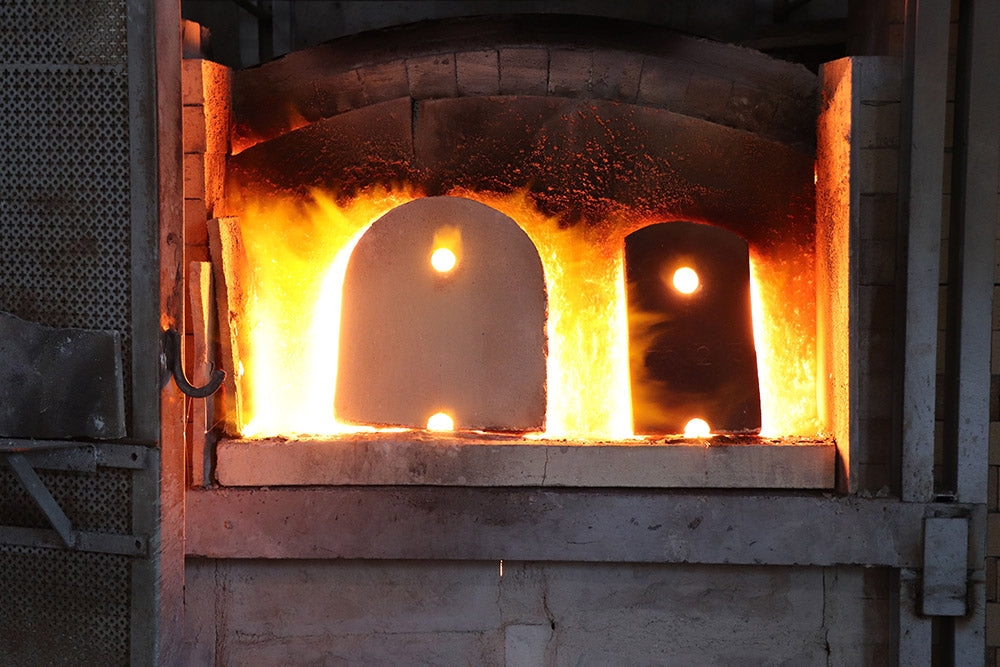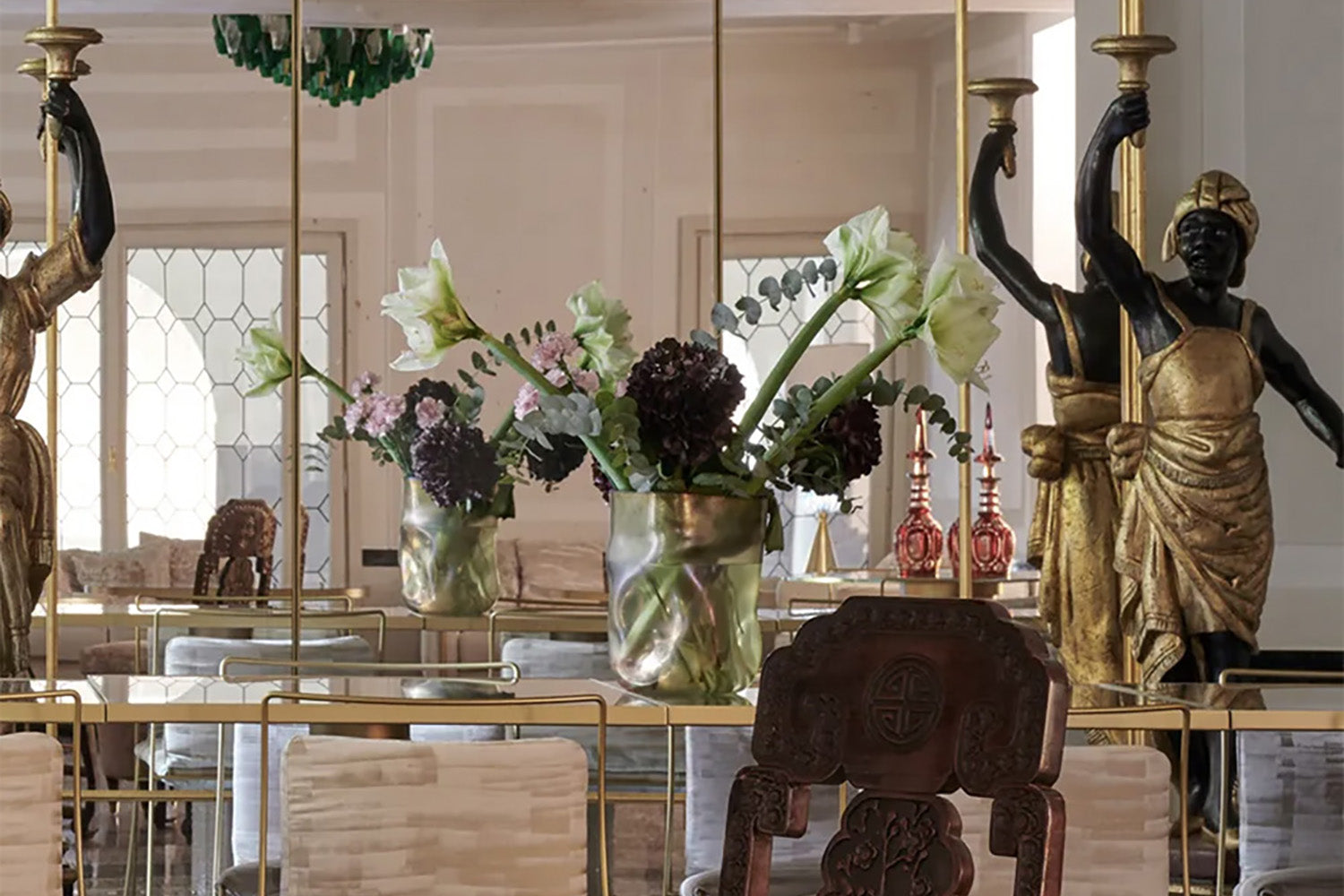We would like to continue our tale about Murano glass and tell you more about the making of glass and the secrets behind this incredible craft which we are also discovering a bit at a time.
Going to the furnace, we became particularly intrigued by the process of composing and melting glass, from sand to incandescent matter, and how the different colours of glass are obtained. This process which precedes the actual glassmaking, is the basis of the craft of glass and often takes place outside of the production hours (usually at night) therefore we don’t get to see it.
We interviewed one of the artisans of the furnace, Marco, to better explain how glass is prepared to then be worked and blown.
Going to the furnace, we became particularly intrigued by the process of composing and melting glass, from sand to incandescent matter, and how the different colours of glass are obtained. This process which precedes the actual glassmaking, is the basis of the craft of glass and often takes place outside of the production hours (usually at night) therefore we don’t get to see it.
We interviewed one of the artisans of the furnace, Marco, to better explain how glass is prepared to then be worked and blown.

Hi Marco, can you share with us a bit about your experience in the furnace?
“This is a hard work, however fire and furnaces have always fascinated me. In fact, I don't just work with glass, I also fix furnaces, change crucibles, make castings, make compositions... it's really the environment of the furnace that has always fascinated me.”
Marco tells us that he used to go as a child to see his grandfather working in a furnace in Murano. Since then, he has been around glass. He started to take jobs in the furnace very young and learnt many different aspects of the job.
“This is a hard work, however fire and furnaces have always fascinated me. In fact, I don't just work with glass, I also fix furnaces, change crucibles, make castings, make compositions... it's really the environment of the furnace that has always fascinated me.”
Marco tells us that he used to go as a child to see his grandfather working in a furnace in Murano. Since then, he has been around glass. He started to take jobs in the furnace very young and learnt many different aspects of the job.
“Ever since I was a child, I've spent time in the furnace. In the first furnace where I worked there were 60 of us of which 12 masters, each one making different products. And I was lucky because I was so young and I was everyone’s helper, so worked every day with a different master and I learnt a little bit from everybody. I was never backing down. I was always willing to work extra hours and change tasks. This gave me the opportunity to learn so many different things. One above everyone has been the most important teacher to me, he thought me a lot about the making of colours. He used to make the colour compositions for Moretti, Venini. He has all the recipes ...”
So, Marco, tell us more about colours.
“Colours come from minerals, it all depends on the minerals and the quantities. It all begins with a mixture of sand, soda, potash, lime, etc.. and minerals. All components must be accurately weighted, just a slight difference can completely change the result. But there are also many variables. It’s like when you make a cake, you put all the ingredients in, you follow the recipe but then you're always curious to find out the result, which can slightly change every time. Even though I always put the same components, in the same amount, still the colour of the glass changes. The glass always changes”
“Colours come from minerals, it all depends on the minerals and the quantities. It all begins with a mixture of sand, soda, potash, lime, etc.. and minerals. All components must be accurately weighted, just a slight difference can completely change the result. But there are also many variables. It’s like when you make a cake, you put all the ingredients in, you follow the recipe but then you're always curious to find out the result, which can slightly change every time. Even though I always put the same components, in the same amount, still the colour of the glass changes. The glass always changes”

Marco knows by heart the chemistry of glass which is a precise chemistry however there are many factors that can change the result: the intensity of the flame and the time of tempering (cooling down). The colour of glass can also change from the humidity in the air! So inevitably the result can never be identical. We ask Marco to show us the components which are stocked in barrels or bags in the form of sand.
“The raw materials themselves are slightly different every time. I always get them in large quantities so that I can have the most stable colours for as long as possible, but when I run out of some minerals and I must get a new batch and the minerals will be different, they will react differently, so the result will be different, it will be a surprise to me as well. So, when I have a new batch of minerals, I must make tests and then modify “my recipes” as I go along to get to the desired colour."
“The raw materials themselves are slightly different every time. I always get them in large quantities so that I can have the most stable colours for as long as possible, but when I run out of some minerals and I must get a new batch and the minerals will be different, they will react differently, so the result will be different, it will be a surprise to me as well. So, when I have a new batch of minerals, I must make tests and then modify “my recipes” as I go along to get to the desired colour."

So how do you get glass from sand and minerals?
"All the components are accurately weighted on a scale and then mixed all together in a bit barrel. Once the composition is ready it’s taken to the oven, we are talking about approximately 100/120 kg of mixture... and with a big spoon I pour it into the oven, and it starts melting and boiling. We start the melting at 1250 °C. The composition is poured in tranches, once it melts, I add more. This pouring process needs to be done a bit a time because once the components are melted there is a 30% decrease in volume. When the sand starts to turn into glass, but it is not yet clean, there are still grains of sand, so the glass is not ready.
"All the components are accurately weighted on a scale and then mixed all together in a bit barrel. Once the composition is ready it’s taken to the oven, we are talking about approximately 100/120 kg of mixture... and with a big spoon I pour it into the oven, and it starts melting and boiling. We start the melting at 1250 °C. The composition is poured in tranches, once it melts, I add more. This pouring process needs to be done a bit a time because once the components are melted there is a 30% decrease in volume. When the sand starts to turn into glass, but it is not yet clean, there are still grains of sand, so the glass is not ready.
You must continue with the melting until the glass boils. Then the temperature it stabilized, and glass must rest overnight, and the next morning is ready to be used. There are colours that take less time to melt, colours that take longer. Anyways approximately between 8 and 10 hours. That’s why glass is usually made at night. Well, even if it’s a tough work, very physical and tiring, I wouldn't do any other work."
Marco, one last question. We know every furnace has it’s what is called it’s “book of recipes” for colours. Can you tell us more about this, without revealing too many secrets…
"Yes, each furnace has its own recipes. Here we use my book which I made over a lifetime. Some colours I experimented with here. Other colours I brought with me after working and in other furnaces. Everyone does that… Then also the components are different. There are furnaces in Murano that have very different components from ours. And not only the colours change a lot, but also the consistency of the glass.
"Yes, each furnace has its own recipes. Here we use my book which I made over a lifetime. Some colours I experimented with here. Other colours I brought with me after working and in other furnaces. Everyone does that… Then also the components are different. There are furnaces in Murano that have very different components from ours. And not only the colours change a lot, but also the consistency of the glass.

If they are composed of more sand and less soda the glass comes out different, softer, or harder. If the glass is harder and drier, it is less workable, but purer. Like Bohemian glass most known for its purity and shyness. Murano glass on the other hand is softer famous for its malleability and impurity."
This is exactly what we try to achieve with our glass: shapes, colours, effects that transform glass.
Thank you, Marco, for sharing your incredible experience, we have learnt so much from you and we hope our readers will enjoy this special journey inside the magic world of Murano glass.
This is exactly what we try to achieve with our glass: shapes, colours, effects that transform glass.
Thank you, Marco, for sharing your incredible experience, we have learnt so much from you and we hope our readers will enjoy this special journey inside the magic world of Murano glass.



Leave a comment
This site is protected by hCaptcha and the hCaptcha Privacy Policy and Terms of Service apply.